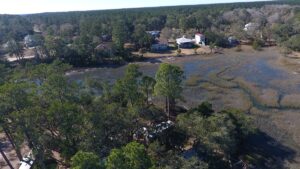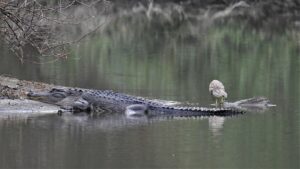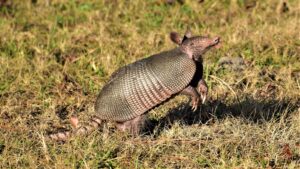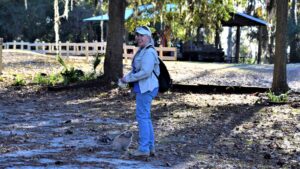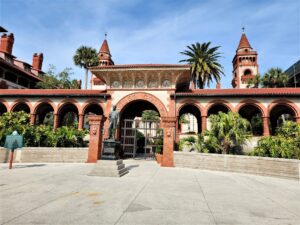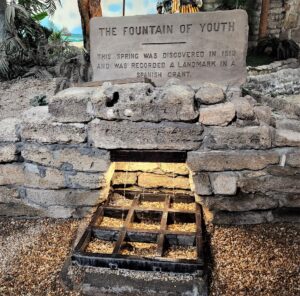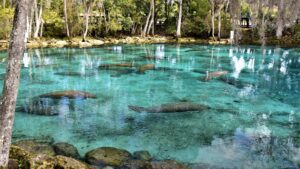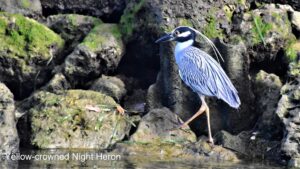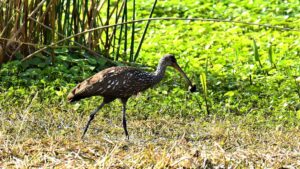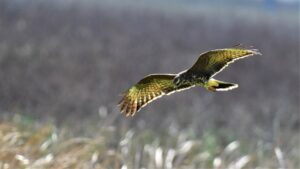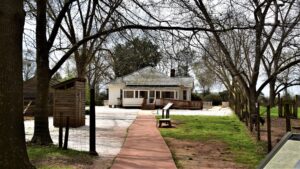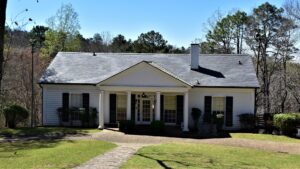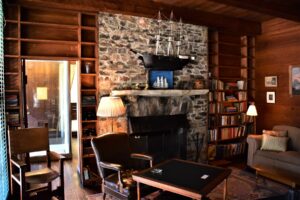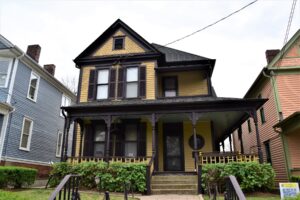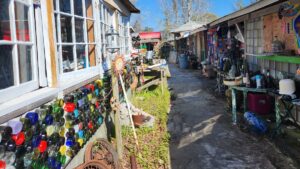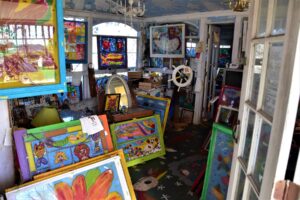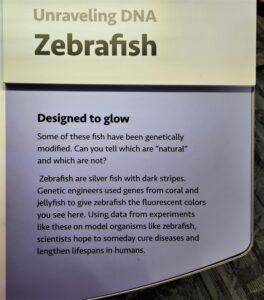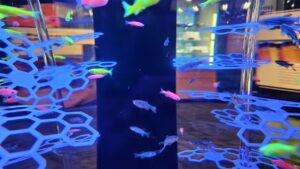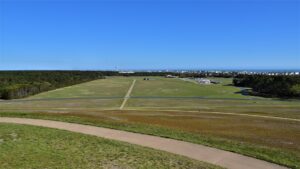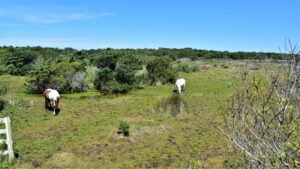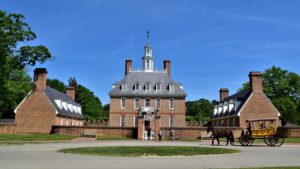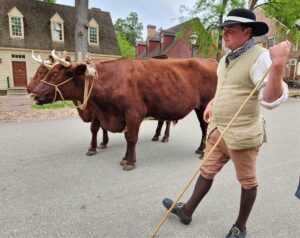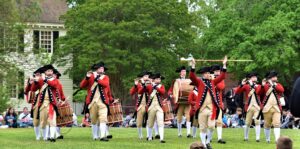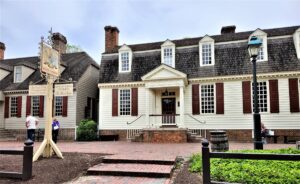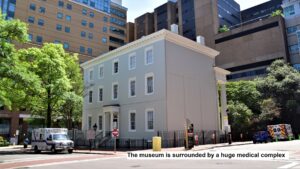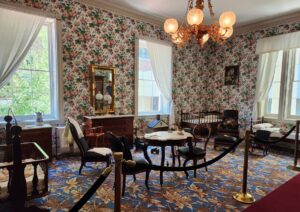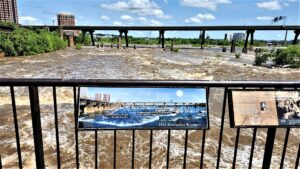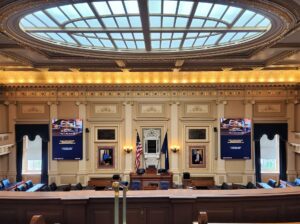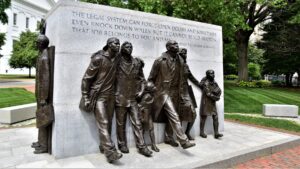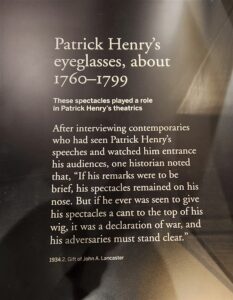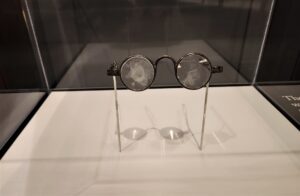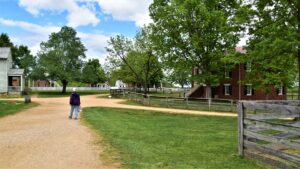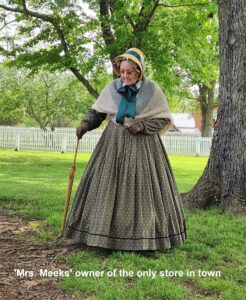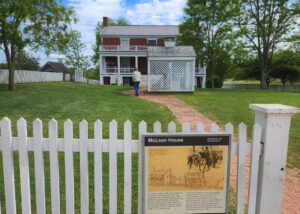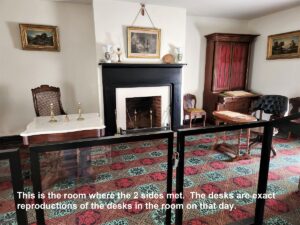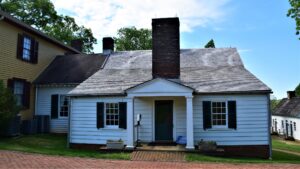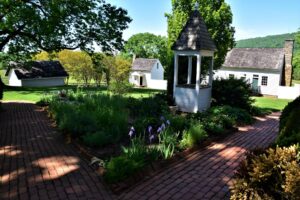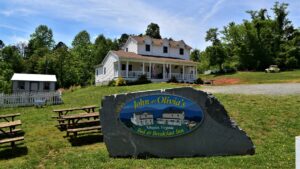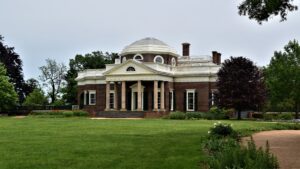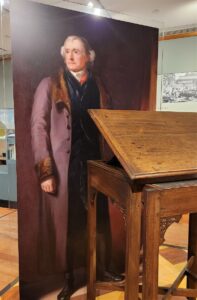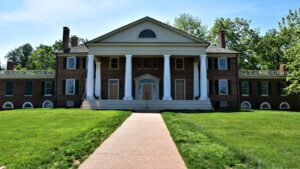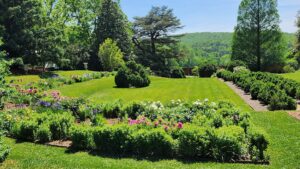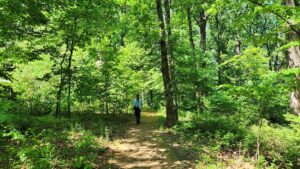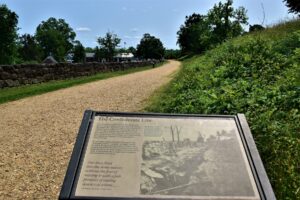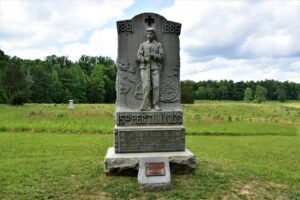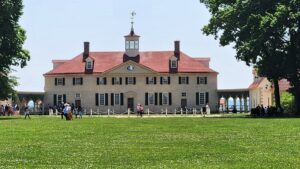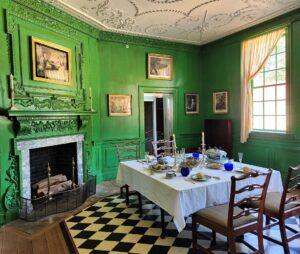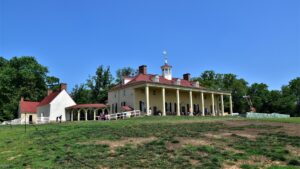This is a recap of 2023 (Part 1), a pretty interesting year in our lives.
January:
Bird watching. Our year began like so many of the days in the south in the winter begin for us, watching birds. We spent Christmas and New Years on a tiny private island, a few miles inland from the Georgia coast,where the owner has added a few RV hookups. Each day, when the tide went out, the shore birds would flock to the marsh in front of us and it was quite interesting to watch.
Just a few miles away was a wildlife refuge that was home to lots of birds, armadillos and alligators. We spent several days taking pictures and watching the activity.
We spent a week further south, in Brunswick, Georgia, at another park with armadillos and shore birds, plus an abundance of friendly rabbits.
The park we stayed in has miles of flat grassy trails along old canals and it is one of our favorite ‘wintering’ places. It is also a convenient spot from which to visit historic areas nearby.
Mid-month, we moved south to St. Augustine, FL, a very pretty and historic city. The fountain discovered by Ponce de Leon, which did not give him eternal youth, is still dispensing water to us tourists.
Crystal River, FL has a wonderful wintering spot for manatees and we were able to see quite a few of them when we visited Three Sisters Springs. The water was clear and sparkly and the manatees, which had crowded in to enjoy the warm water, gave us a good show.
The campground we stayed in was on a canal that drew in multiple Yellow-crowned Herons in the evening, looking for a fish for supper.
February
The promise of seeing lots of birds drew us to Gainesville, FL, where Sandhill Cranes overwinter by the hundreds, as do many other birds. The excitement of the birding areas for us was the number of species that we had never seen before. There are huge Apple snails living in the waters of the Sweetgrass Wetlands, and those snails bring in birds who love to eat them. The tall (and loud) Limpkins and Snail Kites were new birds to us.
Further west in Florida, at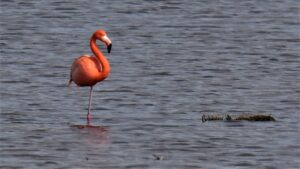 St Marks National Wildlife Refuge, we found our first Flamingo, named Pinky, who flew in during a hurricane event several years ago and has stayed. When Pinky was in the area, he/she was hard to miss – those bright pink feathers fairly glowed in the sunlight.
St Marks National Wildlife Refuge, we found our first Flamingo, named Pinky, who flew in during a hurricane event several years ago and has stayed. When Pinky was in the area, he/she was hard to miss – those bright pink feathers fairly glowed in the sunlight.
March
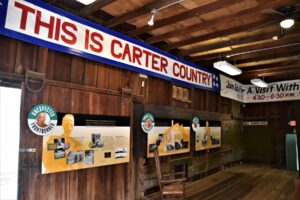 March found us in Georgia, visiting Plains, where Jimmy and Rosalyn Carter live. The tiny town was the launching point for Carter’s campaign and the Carter’s childhood home and campaign buildings are available to tour.
March found us in Georgia, visiting Plains, where Jimmy and Rosalyn Carter live. The tiny town was the launching point for Carter’s campaign and the Carter’s childhood home and campaign buildings are available to tour.
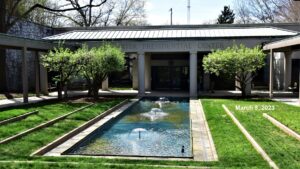 We followed that up with a visit to the Carter Presidential Library in Atlanta.
We followed that up with a visit to the Carter Presidential Library in Atlanta.
In Warm Springs we saw the Little White House, a small home built in the hills by FDR, so that he could spent time in the healing warm waters to ease his polio symptoms. This is also where FDR passed away.
The Martin Luther King National Heritage Park, in Atlanta, has a museum and the street where MLK was raised has been preserved.
Martin Luther King and Coretta Scott King’s gravesite is also in the park and it is set in a lovely water feature.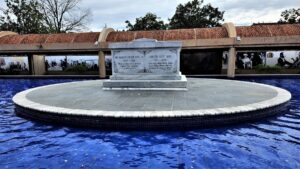
We closed out March in North Carolina. One of the most interesting places we have visited was close to where we were parked in Supply: Mary’s Gone Wild. Mary has been creating buildings, art work, and just ‘stuff’ for years and it is a combination art gallery and junk pile. It was quite fun to pick our way through.
April
Raleigh is North Carolina’s capitol and a wonderful Museum of Natural History is located there. We spent 2 days in the museum because it was so interesting.
The Wright Brothers tested their powered airplane flight on the sand dunes near Kitty Hawk in 1903 and there is a museum built on the site where they did their testing. 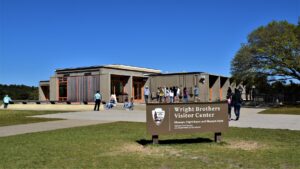
The actual path of the 4 successful tests made on December 17, is laid out, marked with signs and walk-able, which is quite fun.
The OBX (Outer Banks) is a great stretch of sand and sea that we got to enjoy. Driving south to Cape Hatteras is an adventure itself, long bridges over water, snowplows (to us Montanans) scraping away huge piles of sand that easily cover the narrow strip of land that is the highway, and lots of birds and boats to watch. 
The Cape Hatteras Lighthouse has had to be moved inland because of the shifting sands in the area. 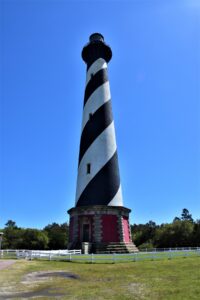 The urban areas are covered in a lot of bushes, which I would assume helps to keep the sandy soil in place.
The urban areas are covered in a lot of bushes, which I would assume helps to keep the sandy soil in place.
The road ends in the ocean a bit south of the lighthouse and a ferry is the only way to continue your travels south. Ocracoke Island, the ferry’s destination, has a resident wild horse herd, probably the descendants of horses that escaped early day boat wrecks.
We shopped for souvenirs, checked out that lighthouse, had a fun lunch at a food truck and then found one of the best beaches for walking that we have ever discovered.
Our next state was Virginia, which has so much to offer that we spent two months exploring it, and still missed some of the interesting sites.
There is a ‘Historic Triangle’ at the bottom edge of the state and we enjoyed learning all we could about these places.
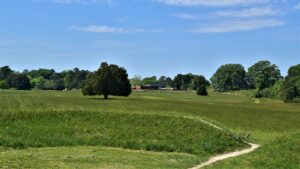 First up, Yorktown Battlefield, where Cornwallis surrendered to George Washington in the last significant battle of the Revolutionary War. Miles of trenches were dug into the farmland by both sides and some of those battles lines are preserved in the historical park.
First up, Yorktown Battlefield, where Cornwallis surrendered to George Washington in the last significant battle of the Revolutionary War. Miles of trenches were dug into the farmland by both sides and some of those battles lines are preserved in the historical park.
We were lucky enough to attend a ranger talk by a very knowledgeable ranger who was able to describe the battle scene quite clearly as we walked around.
In the visitor center, George Washington’s battle tent is on display, still in very good shape, considering its age. 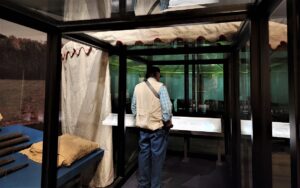
The second point of the triangle is Jamestown, the oldest permanent English settlement in North America. Archaeologists are constantly digging in the site, trying to discover where all the buildings were. 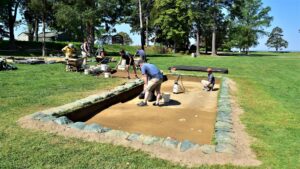
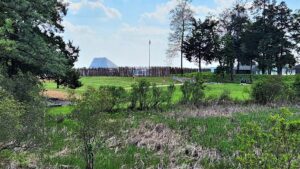 They recently were able to identify all the corners of the original fort and have put up a pole fence around the area.
They recently were able to identify all the corners of the original fort and have put up a pole fence around the area.
The final point on the triangle is Colonial Williamsburg, a large park of colonial buildings with people in period costumes giving tours and demonstrations.
Our favorite Virginia day began with a lecture by a high school history teacher, at St. John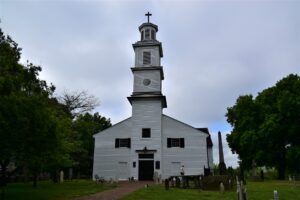 ‘s Episcopal Church, which is situated on a hill overlooking Richmond. The teacher gave an extremely interesting talk about Patrick Henry’s famous ‘Give Me Liberty or Give Me Death’ speech, why Henry was at that church on that day, what the speech meant, and how that helped spur Virginians into the Revolutionary War. The teacher also gave us the history behind the church and even the attached graveyard. He was a great speaker and drew us into the story quite easily.
‘s Episcopal Church, which is situated on a hill overlooking Richmond. The teacher gave an extremely interesting talk about Patrick Henry’s famous ‘Give Me Liberty or Give Me Death’ speech, why Henry was at that church on that day, what the speech meant, and how that helped spur Virginians into the Revolutionary War. The teacher also gave us the history behind the church and even the attached graveyard. He was a great speaker and drew us into the story quite easily.
We then visited the ‘White House of the Confederacy’, where Jefferson Davis and his family lived from 1861 to 1865. A young lady gave a good tour, with lots of details about the house, which is now part of a huge hospital campus.
The Canal Walk, a path along the James River and across a bridge over the river, was our final destination that day. The bridge displays information panels about the last three days of the battle where the Union overtook Richmond, Davis’s hasty evacuation of the city on another bridge across the river and then President Lincoln’s arrival.
May
May found us still enjoying the many things to do in Virginia.
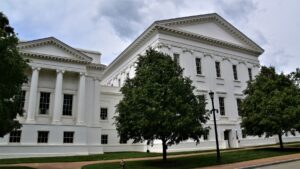 We visited the state capitol in Richmond, which was undergoing some major renovations on the outside, something that we see quite often in our visits to other state’s capitol buildings. The older buildings need constant upkeep. This capitol was rather small and plain compared to others, but it was still quite elegant.
We visited the state capitol in Richmond, which was undergoing some major renovations on the outside, something that we see quite often in our visits to other state’s capitol buildings. The older buildings need constant upkeep. This capitol was rather small and plain compared to others, but it was still quite elegant.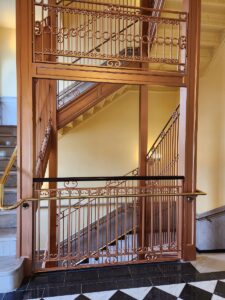
We always visit the capitol building and, if available, the state history museum in each state that we visit. Virginia has a Museum of History and Culture and we enjoyed the displays.
Appomattox Court House (where Lee surrendered to Grant) is a tiny village owned by the National Park Service and preserved as an important piece of American history. Some of the buildings are original and some have been rebuilt. Costumed actors play the part of villagers and stay in character while talking about their lives in 1860s.
The McLean House, where Lee surrendered to Grant, still stands after being dismantled and then rebuilt.
A very interesting note about the McLeans: their home was in the middle of the Battle of Bull Run at the beginning of the Civil War. The McLeans wanted to avoid any more war so they moved to Appomattox Court House, where they once again ended up in the middle of a battle. The family was witness to the beginning and the end of the War.
Several U. S. Presidents built their homes in the hills of Virginia and we visited them all.
President James Monroe built Highland and did not spend much time there after he was elected President. The house burned after he sold it and another home was built on the site; however the guest house and outbuildings are still the originals.
Close to Highland, and in the hills, is the town of Schulyer, the childhood home of Earl Hamner, the author of the book that became the TV series, The Waltons. It is a tiny town that has capitalized on the success of the book and TV series.
Monticello, Thomas Jefferson’s home, was next and we took several of the available tours. We ended up with mixed feelings about Jefferson; he fathered 6 children with a very young enslaved girl, while calling for freedom for white men. In the end, he willed Sally Hemmings to his sister instead of setting her free.
On to the final President’s house, James Madison’s Montpelier, another beautiful home with lovely grounds and even an old growth forest.
Two battlefields, where horrible bloody battles raged during the Civil War, occurred in this area of Virginia: Fredricksburg and Spotsylvania. It is always hard to imagine the horror that the now green, peaceful fields and hills once witnessed.
Mount Vernon, another ‘must see’ for us, was a great place to visit. We love walking in the footsteps of famous people. Parts of the house were open to the public, as well as many of the original out-buildings and gardens.
That ended the month of May and our time in Virginia, and we were on the road to West Virginia – the hilliest state!

